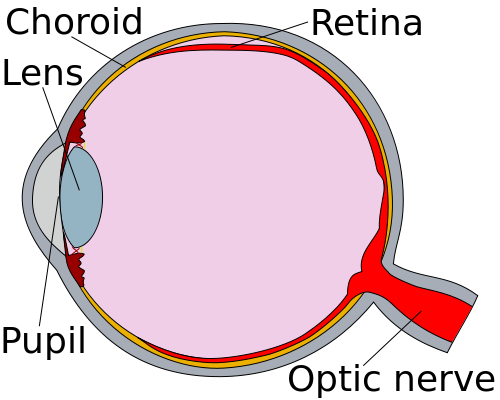Car Crash Eye Injuries
Car Crash Eye Injuries
Even the mildest of car accidents can trigger an airbag deployment. These airbags are essential in cushioning the impact of the head and body against the steering wheel and dashboard. Unfortunately, due to the speed of the accident, this airbag has to deploy quickly. This means the airbag is anything but soft because it has to fill in fractions of a second. Furthermore, the airbag actually contains nitrogen along with a host of other chemicals to speed inflation. When the head strikes either the dashboard or the airbag, serious injuries to the eye can result. One of the most common and most serious injuries is called retinal detachment.
What is the Most Important Part of the Eye?
The retina is arguably the most important part of the eye. As light enters and passes through the lens of the eye, the light strikes the retina. The retina is a thin layer of tissue in the back of the eye that projects the image on the brain by way of the optic nerve for interpretation. Without the retina, the eye is blind. Because the retina is thin, the attachments between the retina and the rest of the eye is not very strong. Therefore, a blow to the head during a car accident can detach the retina from the rest of the eye. Retinal detachment is considered a medical emergency because the retina must be reattached quickly to preserve vision.
Car Crashes Involving a Retinal Detachment
During retinal detachment, symptoms do not appear immediately because it is unusual for the entire retina to detach at once. Similar to a peeling phone cover or peeling laminate floor, it takes time for the entire retina to detach. People start by seeing floaters in their eyes. They might initially have trouble focusing. Over the span of seconds to minutes (depending on the severity of the injury), people will begin to notice a curtain falling over their field of vision in the affected eye. This is often accompanied by flashes of light in the affected eye.
Diagnosing Retinal Detachment
The diagnosis of retinal detachment is largely a clinical one. A physician, usually an ophthalmologist, will usually employ an ophthalmoscope to examine the back of the eye. The retina is usually easy to see in a healthy eye and will be missing in the case of retinal detachment. Unfortunately, this injury is usually bloody in a car accident, making it almost impossible to see anything with the ophthalmoscope. In this case, the doctor will use ultrasound to visualize the injury. While other scans might provide cleaner pictures, this is a medical emergency and quick evaluation is a necessity.
Repairing Retinal Detachment
A retinal detachment can be repaired in a couple of different ways depending on the severity. One of the most common methods involves the use of air injection into the eye. Because air will float in the fluid, a properly positioned bubble can actually raise the retina back into position on the back of the eye. Picture the retina riding on top of the air bubble back to the proper location. Once in position, the surgeon will use cryopexy to reattach the retina. Another method involves draining the entire liquid of the eye, called the vitreous humor. Once the fluid is drained, the retina is flattened using air and then reattached. Over time, the eye produces more vitreous humor to refill the globe.
Related Articles by Ed Smith:
- Common Eye Injuries
- Retinal Tears and Detachments
- Corneal Abrasions
- Eye (Globe) Rupture
- Blindness
- Head and Brain Injuries
Roseville Auto Accident and Personal Injury Attorneys
I’m Ed Smith, a Roseville auto accident lawyer. If you or someone that you love has been in a car accident, please call me anytime at 916-921-6400 or 800-404-5400 for free, friendly advice.
Member of Million Dollar Advocates Forum.
Read my past verdicts and settlements.
See our reviews on Yelp, Avvo and Google.
Image Attribution: By Erin Silversmith from an original by en:User:Delta G derivative work: RexxS CC-BY-SA-3.0 (https://creativecommons.org/licenses/by-sa/3.0/)], via Wikimedia Commons
:DR [seo-bw]

